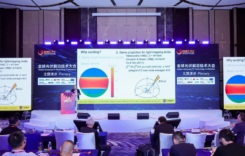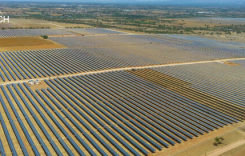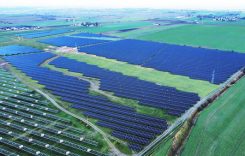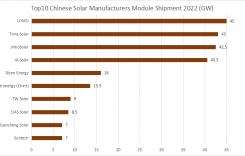PVTIME – In its latest report, the International Renewable Energy Agency (IRENA) revealed that global solar PV capacity additions reached an impressive 451.9GW in 2024, equivalent to 1.2GW installed daily.

This unprecedented growth highlights the dominant role of solar energy in driving the global energy transition, which is supported by technological advancements, falling costs and evolving market trends.
Across all renewable energy sectors, total new capacity in 2024 was 585GW, 77% of which came from solar, far outpacing wind (113GW) and hydropower (15GW). This means that almost eight out of every ten units of new renewable electricity generated globally last year came from solar sources.
China remained a key driver, contributing 278GW to the global total, accounting for 61.5% of the overall growth. These figures suggest that around six in 10 of the solar panels installed worldwide in 2024 were produced in China. A further 33 countries joined China in the ‘GW Club’, with the United States, India and Brazil among those making significant strides in solar deployment.
IRENA’s Director-General, Francesco La Camera, has noted that solar power is now cheaper than coal-fired electricity, describing the current period as a golden age for investment in solar energy. This assertion is supported by data showing an 89% drop in solar power costs over the past decade, driven by technological progress and economies of scale. This cost competitiveness has accelerated the sector’s expansion and provided a strong economic incentive for the global energy transition.
The environmental credentials of solar energy are equally compelling. According to research from Tsinghua University, a single solar panel recoups the energy used in its manufacture within 1.6 years while operating for 25 to 30 years. Over its lifetime, it emits just 5% of the carbon dioxide produced by coal-fired power stations. Innovative models, such as the combination of solar farms and reforestation in Yunnan, deliver dual benefits: generating 50 million kWh of electricity annually and securing 880,000 yuan through carbon sink trading. This offers a replicable template for sustainable development.
However, despite 2024’s achievements, the target of reaching 11.2TW of global renewable capacity by 2030 will require an annual growth rate of 16.6%. UN Secretary-General António Guterres has urged nations to strengthen their solar installation targets in their Nationally Determined Contributions (NDCs) to address the climate crisis.
As a global leader in the solar sector, China is playing a pivotal role in technology transfer and in shaping international standards. This marks the beginning of a new era in which the global solar supply chain is increasingly influenced by Chinese expertise.

Scan the QR code to follow PVTIME official account on Wechat for latest news on PV+ES











